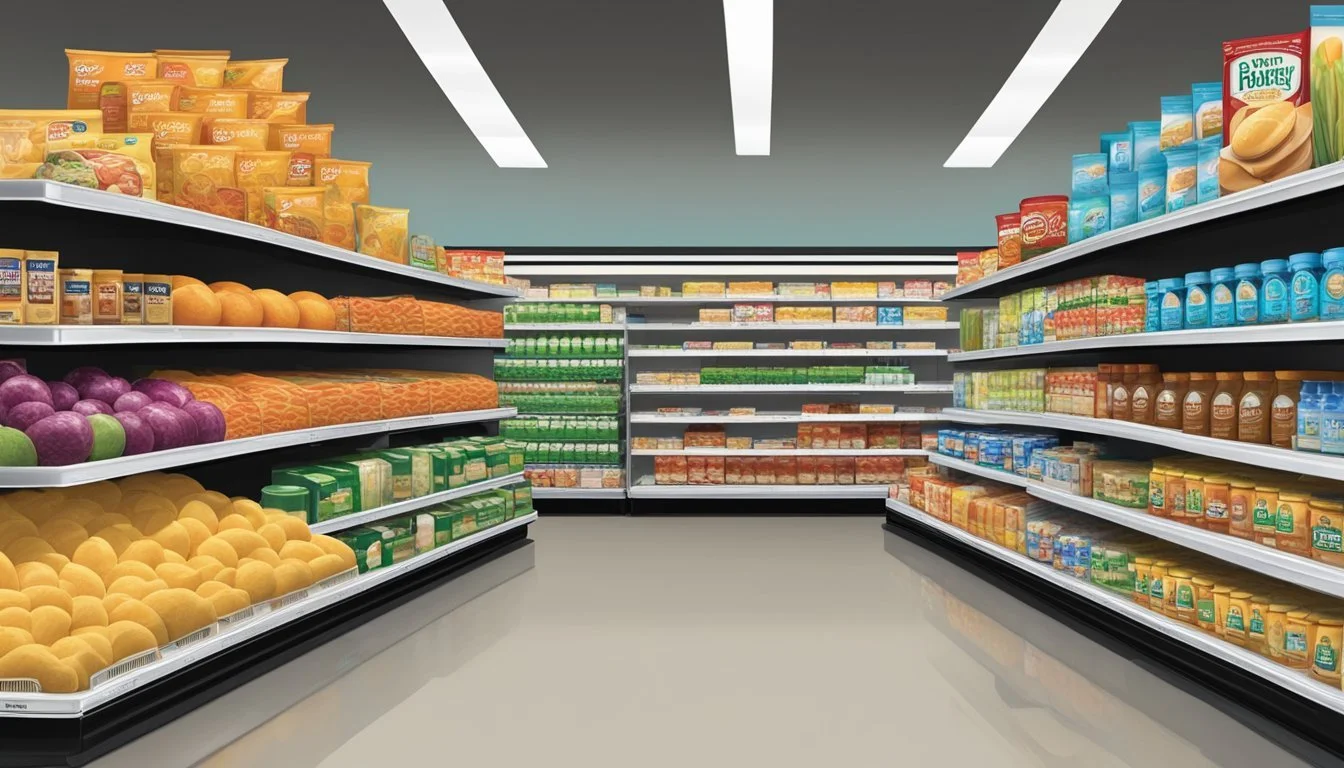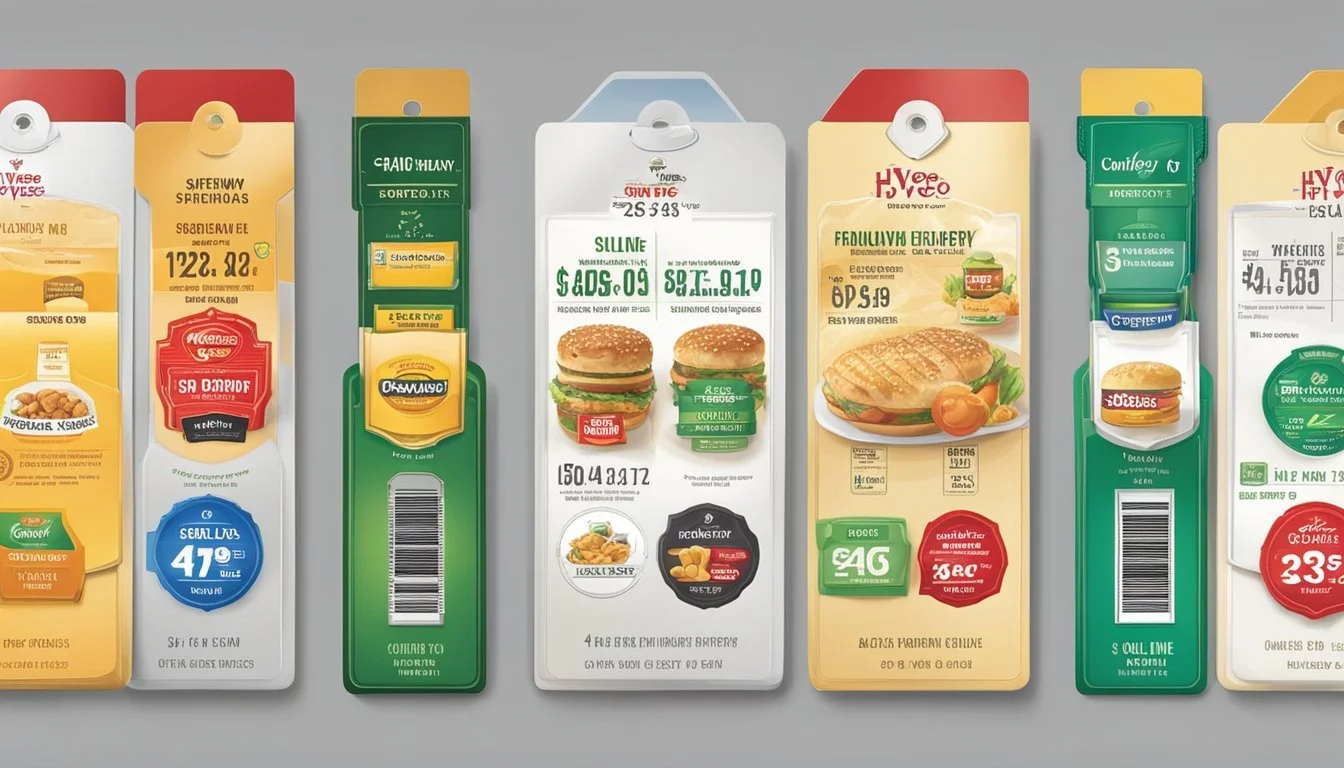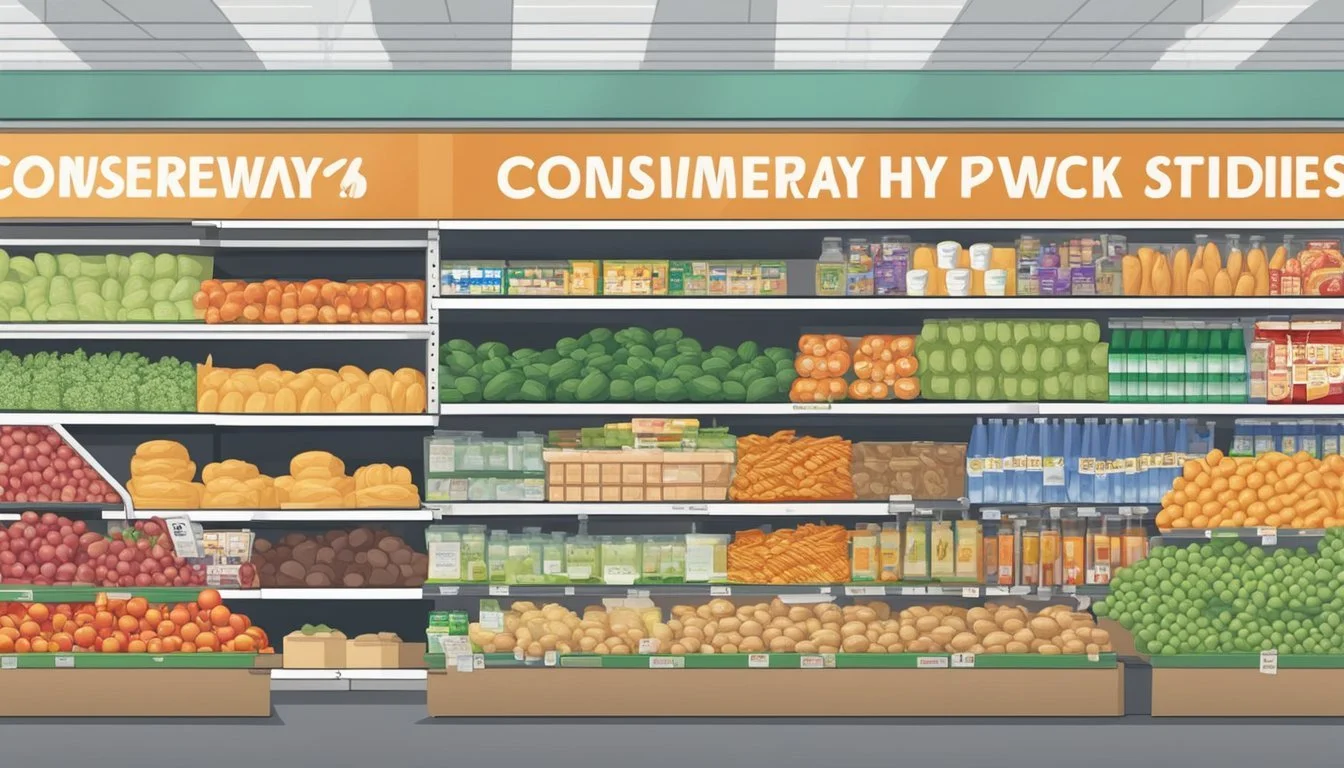Is Safeway Cheaper Than Hy-Vee?
Comparison of Grocery Store Prices
Part of Our Grocery Store Guide with Details on Safeway Prices and Hy-Vee Prices
When comparing grocery store prices, consumers often wonder whether Safeway, a widely recognized chain with stores across the United States, offers better prices than Hy-Vee, a staple in the Midwestern grocery market known for its employee ownership. Pricing strategies between these two retailers can vary substantially depending on various factors including location, promotions, and product selection. Consumers looking for the best deals may need to consider weekly sales, loyalty programs, and the range of store-brand products offered by both Safeway and Hy-Vee.
To provide shoppers with a clearer picture, it is essential to look at the stores' pricing models and how they align with customers' shopping habits. While Safeway has built a reputation for convenience and a broad selection of goods, Hy-Vee is often praised for its customer service and quality produce. The question of which is cheaper cannot be answered broadly as prices can fluctuate and specials can change weekly, impacting the total cost of a grocery bill. Therefore, it becomes important for consumers to conduct regular price checks on their commonly purchased items.
Recently, discussions within the industry and among consumers have tackled the pricing comparison between these two grocers. Certain analyses suggest that while Safeway offers competitive pricing on select items, Hy-Vee provides consistently low prices on its store brands, potentially leading to overall savings. However, these findings can vary by region and do not take into account temporary price reductions or exclusive deals for loyalty card members. Shoppers aiming for the lowest prices might find that a mix of both Safeway and Hy-Vee, paired with a strategic shopping approach, could yield the best overall value.
Comparative Overview of Safeway and Hy-Vee
When comparing Safeway to Hy-Vee, shoppers will find distinct differences in pricing, store count, and regional availability. Safeway, with a broader national presence, might have a higher price point due to partnerships with exclusive brands and added services like delivery. Factors contributing to Safeway's pricing include:
Brand partnerships
Specialty services
National availability
Hy-Vee, predominantly located in the Midwest with approximately 280 stores, prides itself on being employee-owned. This chain is often recognised for its competitive pricing strategies and weekly ads, which can provide cost savings for consumers. Important characteristics of Hy-Vee include:
Employee ownership
Regional focus
Competitive pricing via sales
To objectively compare the cost of shopping at both, users should consider:
Weekly Ads and Discounts: Hy-Vee frequently promotes sales which can significantly reduce prices.
Exclusive Brands and Products: Safeway might offer unique items, influencing pricing structures.
Geographical Availability: Hy-Vee's presence in the Midwest might lead to lower logistics costs, translating into savings for consumers in that region.
Safeway's cost may be affected by offering premium services and a wide range of products, which can lead to higher overhead costs and, consequently, higher prices for consumers. Hy-Vee may offer cost benefits for those within its operating regions, especially when taking advantage of its sales and promotional events. It is advisable for consumers to closely monitor both Hy-Vee and Safeway's store flyers and promotions to make the most of their grocery budgets.
Price Analysis by Product Category
In comparing Safeway and Hy-Vee, the analysis zeros in on pricing across various product categories to determine which supermarket offers a more cost-effective shopping experience.
Groceries and Dry Goods
When examining the prices of groceries and dry goods, shoppers may find that staple items such as rice, pasta, and canned goods are competitively priced at both retailers. However, Safeway might offer periodic discounts through loyalty programs which can tip the scale in their favor for budget-conscious consumers.
Fresh Produce
In the fresh produce section, Hy-Vee frequently promotes locally sourced items that might be priced slightly higher than Safeway’s offerings. Consumers looking for organic options may find Safeway has more choices, which could influence the overall cost comparison in this category.
Meats and Deli Items
Meats and deli items tend to fluctuate in price more significantly. Shoppers seeking variety and specialty cuts might lean towards Safeway for its extensive selection. Price-wise, Safeway and Hy-Vee are often on par, but special offers, such as Safeway's weekly deals on certain meat products, may provide an edge.
Dairy and Bakery
Considering dairy and bakery goods, both supermarkets offer a robust assortment of products. Safeway often has competitive pricing on milk, cheese, and eggs, but Hy-Vee's in-store bakery provides a vast array of freshly baked goods that might come at a premium compared to Safeway's pre-packaged options.
Prepared Foods and Deli
For those interested in prepared foods and deli, Safeway regularly has meal deals and savings through their Just For U program. Hy-Vee, on the other hand, focuses on made-to-order meals that can be more expensive. Price-conscious consumers are encouraged to watch for Safeway's discounts in this category.
In-Store Brands versus National Brands
When consumers are shopping at grocery stores like Safeway or Hy-Vee, they routinely face the decision between purchasing store brand products and national brand items. Store brands, often referred to as private label products, are manufactured and sold by the grocery store itself. On the contrary, national brands are produced by companies that invest significantly in marketing to build consumer recognition and loyalty.
Quality Considerations
Many shoppers equate national brands with higher quality, but this perception is not always accurate. Store brands are typically produced by reputable manufacturers that also supply national brands. Recent taste-tests indicate that the quality of store-brand food products can be on par with, if not exceed, that of their national brand counterparts.
Consumer Reports highlighted that some store brands have distinct flavor profiles comparable to renowned brands.
Quality of Ingredients: Store and national brands often source their ingredients from similar suppliers, resulting in comparable product standards.
Value Proposition
Store brands usually offer better value, with prices substantially lower than national brands. This price difference does not necessarily reflect a compromise in quality.
Price Comparison:
Store brand items are on average 20-25% cheaper than national brands, yielding significant savings for consumers.
The affordability of store brands is attributed to the lack of marketing expenses that are otherwise incurred by national brands.
Shoppers are increasingly embracing store brands, as evidenced by the growing share of store brand sales. One in every five grocery products sold in the United States is a store brand, exemplifying their rising acceptance. The discerning customer will find that store brands provide a smart balance of quality and value, challenging the preconceived notion that national brands are superior by default.
Discounts, Coupons, and Loyalty Programs
When comparing grocery chains like Safeway and Hy-Vee, understanding their discounts, coupons, and loyalty programs is critical for consumers looking to save money.
Safeway offers the 'for U™' program, which provides significant savings opportunities. Shoppers can:
Clip digital coupons: Available via the Safeway mobile app or website.
Receive personalized deals: Tailored to the shopper's purchase history.
Redeem rewards: Can be used for free gas and groceries.
Cash discounts: Available on future purchases.
These benefits can be accessed through Safeway's free membership, potentially making a considerable difference for regular customers.
Hy-Vee, on the other hand, also has a robust rewards system. Customers can enjoy:
Fuel Saver + Perks® program: Offers discounts on fuel and exclusive deals.
Digital coupons: Can be loaded onto the Hy-Vee Aisles Online App.
Personalized offers: Based on shopping habits and preferences.
Both stores typically promote weekly sales and in-store specials that can further reduce the average grocery bill when used effectively.
Feature Safeway Hy-Vee Loyalty Program Safeway for U™ Fuel Saver + Perks® Digital Coupons Yes Yes Rewards Redemption Gas, Groceries, Cash Discounts Fuel, Exclusive Deals Personalization Personalized Deals Offers Based on Shopping Habits
While specific savings will vary depending on individual shopping patterns, both stores offer comprehensive programs designed to help shoppers manage their expenses through various discounts and coupons. It's worth noting that the effectiveness of these systems in offering savings can be influenced by how often and how strategically a customer uses the available discounts and loyalty rewards.
Supermarket Chains: Market Positioning
When evaluating supermarket chains, one can discern distinct pricing strategies and target demographics, evident in the varied positioning of stores like Safeway, Hy-Vee, Walmart, and Target, up to niche players like Whole Foods and Trader Joe's.
Target and Walmart Comparison
Target and Walmart are mainstream retailers distinguished by their aggressive pricing and broad consumer demographic. Walmart's strategy focuses on providing the lowest prices possible, often averaging 20% lower than the competition. In contrast, Target positions itself slightly upscale, offering a mix of affordability with a touch of premium on select items.
Niche Markets: Whole Foods and Trader Joe’s
Whole Foods and Trader Joe's cater to specific segments of the market. Whole Foods, known for its organic and high-quality offerings, draws consumers willing to pay a premium for healthier options. Trader Joe's distinguishes itself through unique private-label products and a cult-like following, fostering loyalty with a curated selection at competitive, though not the lowest, prices.
Other Grocery Chain Comparisons
When considering the costs of groceries, consumers often look at various retailers to find the best deals. This section examines how other grocery chains compare in terms of price to help consumers make informed shopping decisions.
Aldi and Sprouts Farmers Market
Aldi is renowned for its cost-efficiency, operating approximately 1600 stores across 38 states. They are known for selling a selection of staple items at low price points, often significantly cheaper than conventional supermarkets. Sprouts Farmers Market, on the other hand, specializes in fresh, natural, and organic products. While Sprouts may offer competitive pricing on select items, Aldi typically has lower overall prices due to its streamlined store operations and limited-selection business model.
Kroger and Publix
Kroger is one of the largest supermarket chains, with a variety of store brands that typically offer lower prices than national brands. Publix, prevalent mainly in the southeastern United States, is revered for its customer service but is generally perceived as having slightly higher prices than Kroger. Consumers might find the following distinctions:
Kroger: Often provides cost savings through store-brand options and frequent sales.
Publix: While prices can be higher, the chain often runs BOGO (Buy One, Get One) promotions, potentially reducing the overall bill for savvy shoppers.
Costco and Sam's Club
Both Costco and Sam's Club are membership-based warehouse clubs, with a wide range of products available in bulk. Here's how they compare:
Feature Costco Sam's Club Membership Fee Generally higher than Sam's Club Usually lower than Costco Pricing Competitive, with low per-unit costs Comparable, sometimes lower on select items Store Brands Kirkland Signature — often equated to higher-end brands Members Mark — emphasizes quality at a value
Both warehouse clubs offer significant savings on bulk items, but the best choice may depend on individual shopping preferences and the value placed on either store's exclusive brands.
Online and Delivery Service Considerations
When comparing Safeway to Hy-Vee, particularly in the realm of online and delivery services, customers need to consider various factors, such as delivery fees, membership benefits, and the availability of store brands through these services.
Safeway offers grocery delivery options through its own platform, where consumers can shop for groceries online and have them delivered to their doorsteps. Delivery fees may vary based on location, time slot availability, and order size. Safeway may also offer discounts or promotions for first-time users or for larger orders.
Hy-Vee, similarly, extends its delivery service through Hy-Vee Aisles Online. According to recent data, delivery fees are typically $9.95 with a required minimum purchase. For expedited delivery within 2 hours, the service fee rises, and there may be additional options for free or discounted fees based on a minimum purchase amount.
For those utilizing Amazon Prime, services like Amazon Fresh might provide an appealing alternative, with free shipping on orders exceeding a specific amount. This could be a competitive option if the selection includes store brands from Safeway or Hy-Vee, which are often priced lower than national brands.
Delivery Service Minimum Purchase Delivery Fee Expedited Option Safeway Varies Varies Not specified Hy-Vee Aisles Online $24.95 $9.95 $19.90 (2 hours) Amazon Fresh (Prime) $100 (for free delivery) Varies Not specified
In summary, customers should assess the delivery fees, the availability of store-brand items, and whether subscription services like Amazon Prime may provide additional value or convenience when choosing between Safeway and Hy-Vee's delivery services.
Consumer Cost Comparison Studies
Recent surveys conducted by researchers seek to understand where consumers may find more cost-effective grocery options. These surveys compare prices across various grocery stores, observing trends that reveal cheaper options for consumers. Safeway, a popular grocery chain, often figures into these price comparisons due to its widespread presence.
In evaluating whether Safeway is a less expensive option than Hy-Vee, one must examine a range of consumer goods that are commonly purchased. Researchers typically establish a basket of goods for consistency during these surveys. This basket might include staples like bread, milk, eggs, and produce. Survey results have shown that prices can vary significantly between Safeway and Hy-Vee, though the exact differences can be region-specific.
For example, if a price comparison study were conducted, the findings might illustrate savings at one store over another. The table below represents a hypothetical snapshot of such a survey:
Item Safeway Price Hy-Vee Price Cheaper Option Bread $2.49 $2.29 Hy-Vee Milk, 1 gal. $3.29 $3.09 Hy-Vee Eggs, dozen $1.99 $1.89 Hy-Vee Apples, lb. $1.29 $1.39 Safeway
Please note: This table is illustrative; actual prices may vary.
While price comparison alone provides insights, it’s important to consider the frequency of sales, the availability of store brands, and loyalty programs that may affect the overall cost for the consumer. Each of these factors can tip the scales when determining the overall cheaper option. Shoppers often benefit from these studies as they highlight where they might reduce their grocery bills, whether shopping at Safeway, Hy-Vee, or another store altogether.
Conclusion
When comparing Safeway and Hy-Vee in terms of pricing, data indicates a trend. Hy-Vee's pricing, based on the comparative study, often comes out as more cost-effective. For instance, a specific analysis shows Hy-Vee's total bill as approximately 6% lower than its competitor.
Safeway, on the other hand, can appear more expensive due to several factors, such as exclusive partnerships and additional services like delivery. These aspects potentially add to the consumer costs.
Consumers should also take into account the location and ongoing promotions as these factors can significantly affect pricing. Shoppers are encouraged to leverage weekly sales flyers and consider store brands, like SE Grocers at Winn-Dixie, to maximize savings.
It's worth noting that while Hy-Vee might offer lower prices on a broad selection, Safeway's prices could be competitive for specific items or during promotional periods. Therefore, customers are advised to continuously evaluate prices and consider their individual shopping needs when making a choice between these two grocery stores.











